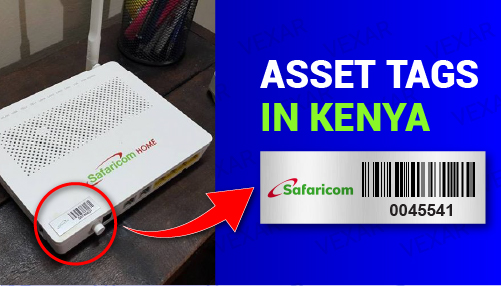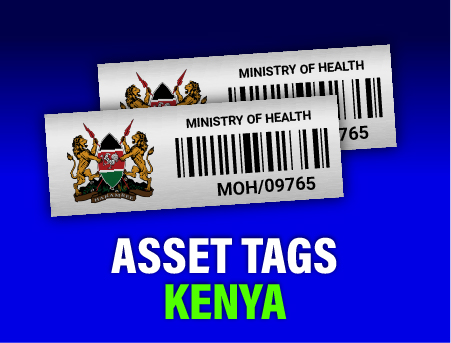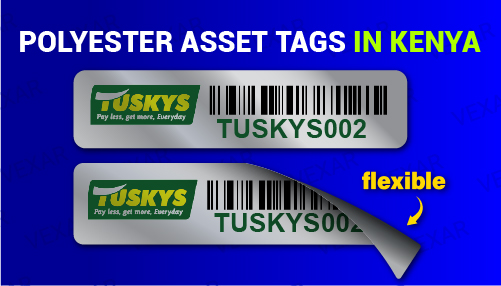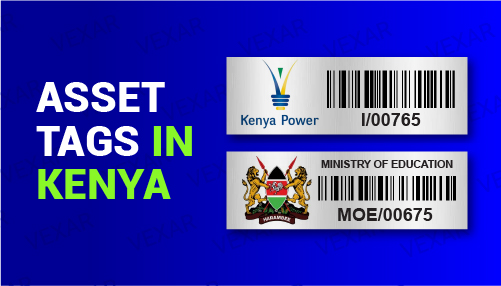Asset Tracking Systems Kenya – Integrating Tags with Software for Accuracy
Asset tracking systems Kenya are transforming how organizations manage, monitor, and protect their physical assets. From hospitals to manufacturing plants, modern businesses are increasingly adopting automated identification tools like barcode, QR code, and RFID-enabled tags—integrated with intelligent software—to gain complete visibility and control. This seamless connection between physical labels and digital systems is the foundation of efficient asset management in today’s data-driven world.
Understanding the Role of Asset Tracking Systems
An asset tracking system enables businesses to record, monitor, and analyze the movement, condition, and lifecycle of every asset. In Kenya, where operations are often distributed across multiple branches or regions, maintaining accurate asset records is critical for compliance and operational efficiency. These systems use uniquely coded asset tags—often aluminium or polyester labels—to link each item to a centralized database, allowing managers to track its exact location and usage history in real time.
Integration Between Physical Tags and Digital Platforms
Integration lies at the heart of every effective asset tracking solution. When physical tags—like QR code aluminium asset tags or barcode labels—are connected to an asset management software, they create a synchronized system that automates updates, reduces manual errors, and provides actionable insights. Employees can scan an asset using a smartphone or handheld device, instantly updating the software with location, condition, and user data. This reduces paperwork and ensures that information remains accurate and up to date.
Why Businesses in Kenya Are Adopting Modern Asset Tracking Systems
Kenyan companies across industries are rapidly adopting digital asset tracking systems to enhance accountability and security. For sectors like education, healthcare, manufacturing, and logistics, these tools minimize losses, detect discrepancies early, and simplify audits. Whether tagging hospital equipment or IT devices, an integrated system ensures real-time visibility—improving planning and resource allocation.
Key Advantages of Asset Tracking Systems
- Accuracy and Transparency: Eliminate discrepancies between recorded and actual assets through real-time data synchronization.
- Reduced Losses: Prevent theft and misplacement by linking each asset to responsible departments or individuals.
- Automated Reporting: Generate detailed audit and maintenance reports directly from the software.
- Scalability: Expand easily as your asset base grows, without losing control or performance.
Choosing the Right Asset Tracking Software
When selecting an asset tracking system, compatibility with existing infrastructure and tagging technology is vital. A robust platform like Vexcloud Asset Management Software seamlessly integrates with barcoded, engraved, or acetone-activated aluminium tags. It enables both small and large organizations to automate tagging, verification, and asset lifecycle management through one centralized dashboard.
Additionally, businesses should prioritize software that offers customizable dashboards, bulk asset import, and real-time notifications. These features not only improve administrative efficiency but also provide a data-driven approach to maintenance and depreciation tracking.
Integration with Mobile Devices and Cloud-Based Solutions
Today’s tracking systems are no longer confined to desktop environments. Cloud-based asset tracking software allows real-time updates from any location. Field officers can scan assets using mobile apps, instantly synchronizing data with central servers. This ensures decision-makers have access to accurate information—whether in Nairobi, Mombasa, or Kisumu.
With the increasing reliability of mobile networks and internet penetration across Kenya, cloud-based solutions have become the most practical approach for modern organizations seeking agility and cost-efficiency.
Improving Audit and Compliance Through Automation
Auditing and compliance remain major challenges for organizations with large asset portfolios. Traditional manual tracking leads to inconsistencies, while automated systems enhance audit readiness. Each scan records timestamped entries, providing a verifiable trail of asset movements. The data can easily integrate with accounting or ERP systems to ensure consistent reporting across all departments.
Integration with Kenya’s growing digital finance systems also means that asset management software can generate accurate depreciation schedules, insurance records, and verification logs for audit compliance.
Combining Asset Tagging with Software for Maximum Efficiency
For full control over your asset ecosystem, hardware and software integration is essential. Using high-quality custom asset tags—from durable aluminium to cost-effective polyester—ensures your labels remain intact, while Vexcloud software ensures your records stay organized. Together, they form a complete system that streamlines tagging, reduces losses, and simplifies decision-making.
Industries managing high-value equipment, like universities and hospitals, benefit the most from this dual approach. It bridges physical assets with digital data, enhancing accountability across all levels of the organization.
Best Practices for Implementing Asset Tracking Systems
- Begin with a complete asset inventory and data cleanup before tagging.
- Select durable tags that can withstand heat, chemicals, or outdoor exposure.
- Train staff on proper scanning and data entry procedures.
- Use cloud-based software for accessibility and scalability.
- Perform quarterly audits to validate the system’s accuracy.
When these practices are consistently applied, asset tracking transforms from a back-office function to a strategic management tool.
Conclusion: The Future of Asset Tracking in Kenya
As technology evolves, asset tracking systems in Kenya will continue to integrate deeper with IoT, AI, and mobile automation. From remote equipment monitoring to predictive maintenance alerts, the possibilities are limitless. Vexar Solutions is already helping businesses embrace these innovations—bridging traditional asset management with next-generation software.
Explore our fixed asset tagging services to discover how integrated solutions can optimize your asset visibility and reduce operational costs.
For additional insights, learn more about ISO 55001 Asset Management Standards and global asset management practices.
WhatsApp us






